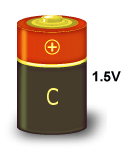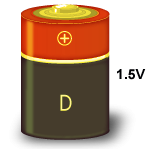Site Prices Update
Last Updated28th June 2022
All calculations on this site are based on current fuel prices, they are checked regularly and calculations are automatically updated.
The costs calculated based on these fuel prices should be regarded as 'good estimates', given that fuel prices vary in different parts of the county and at different time of the year.
The calculations also have different levels of accuracy depending on the nature of the calculation. For example calculating the energy use of a known power output TV is very easy compared to calculating the effect on energy savings when insulating a cavity wall.
Site Calculations
Set Your Own Prices
User PricesFor several of the fuel prices on this site you can now set your own prices and all the calculations on the site will adjust accordingly.
Set Prices
At Confused About Energy we aim to provide practical, impartial advice on all aspects of energy usage, climate change and ways to save money on energy bills.
All calculations on this site are based on current fuel prices they are checked regularly are automatically updated and were last changed on:-
28th June 2022
The costs calculated based on these fuel prices should be regarded as 'good estimates', given that fuel prices vary in different parts of the county and at different time of the year.
The calculations also have different levels of accuracy depending on the nature of the calculation. For example calculating the energy use of a known power output TV is very easy compared to calculating the effect on energy savings when insulating a cavity wall.
Site Calculations
| Electricity | £0.271 per unit (1 kWh) |
| Economy Electricity | £0.094 per unit (1 kWh) |
| Gas | £0.072 per unit (1 kWh) |
| Domestic LPG | £0.122 per unit (1 kWh) |
| Heating Oil | £0.104 per unit (1 kWh) |
| UK Grid CO2 Emissions | 0.233 kg per kWh used |
The main units used in this site are in the table below, For a complete explanation of power and energy Read More.
| Unit | Name | Detail |
|---|---|---|
| W | Watt | Unit of Power |
| kW | Kilowatt | 1000 watts |
| kWh | Kilowatt hour | Measure of Energy |
| L | Litre | Measure of Volume |
Please use twitter to ask a question Message @@EnergyThinking
When it comes to pricing energy from batteries it is difficult just to try and quote cost/kWh. There is obviously a very wide range of battery sizes in terms of both electrical capability (voltage, current and energy) and physical values (size and weight), as well as various materials used to make them with the range of applications and needs equally large.
With special applications such as watches, hearing aids, pocket calculators and electronic dictionary type units and other applications requiring physically very small power sources the size and weight dominate and while there are a very large selection of shapes and sizes made, for the user there is less choice of battery type. Also some of these more special purpose batteries offer voltages other than the very common 1.5V or 9V. However many common pieces of equipment use three main sizes of battery, namely AA, AAA and PP3 as shown together with some of their alternative reference numbers and these three will be discussed further.
 |
 |
 |
| Some Alternative Numbers | ||
| AA | MN1500 | LR6 |
| AAA | MN2400 | LR03 |
| PP3 | MN1604 | 6LR61 |
To these could be added slightly larger batteries numbered C and D cells which are commonly used for portable audio units such as radios where higher powers are required.
 |
 |
| Some Alternative Numbers | ||
| C | MN1400 | LR14 |
| D | MN1300 | LR20 |
Battery features
VoltageThe chemicals used within the battery apart from affecting the energy it is capable of providing also affects the voltage it produces and while they have a nominal voltage of 1.5V in the case of AA and AAA it can vary typically from about 1.5 to 1.7V for a new cell. Also how the voltage changes with use varies between different types; some have a reasonably constant voltage before suddenly falling off when nearly discharged while others just steadily decline.
Energy This, if quoted, is specified in mAh as opposed to joules on the basis that if the voltage is assumed to be reasonably constant they are proportional.
Ah*V=Joules
The energy available from a battery varies with load current and fall off at higher load currents. Perhaps for this reason, except in the case of rechargeable batteries, usually no information on energy is written on the cell, except by a vague description such as ‘high power’. As a rough guide alkaline cells have at least twice the energy of carbon-zinc and AA cells have at least twice the energy of AAA cells.
Internal resistance Effectively a battery has associated with it an internal series resistance which causes an increasing terminal voltage fall with increasing load current. This means that for applications requiring a large current (such as motors) the cell needs to have a low output resistance for it to be useful. As a battery discharges this resistance tends to increase. Larger cells and ‘high power’ cells tend to have lower internal resistance.
Leakage current With batteries there is a leakage current through the cell which is continually discharging it which means that even if it is not being used the battery is gradually becoming useless. Hence they have a so called ‘shelf life’ which can be about 10years for better constructed cells but much shorter for others; hence the need to see that they are bought within that date even if the packaging is unopened.
Typical applications where batteries are heavily used


Controllers for tv and similar equipment These in general just need to drive light emitting diodes (LEDs) and operate in the region of 10 to 20mA and are only using power intermittently. Hence the demand from the battery is not very onerous and no special characteristics are required, so apart from the inconvenience of changing it more often, a cheaper battery can be used. They should work for a reasonable length of time and will not be left to just discharge or corrode the unit while not being used.
Torches For torches which are being used frequently (such as bicycles) LED types are now normally used and being low current devices they will work with most types of cell although longer life would be achieved with a ‘high power’ cell. For a torch used in a stand by capacity, a battery with a longer shelf life would be more desirable. However wind-up torches overcome this problem and by winding them about once a month the rechargeable battery within them can be maintained in a healthy state.
Mechanical toys, small portable audio equipment using motors, heart beat monitors and cameras As these require a reasonable current to operate effectively, for a reasonable time between battery changes and not having to purchase them while travelling, ‘high power’ batteries are needed.

Smoke alarms These are units which need to work for long periods while using very little energy and need to be very reliable. Hence low leakage batteries are required and it is worth the extra cost of more expensive type cells.
Cost
With the lack of information given on batteries comparison between cheap and more expensive batteries is difficult to judge. Also there are many shops which sell well known makes at cut prices as they near the end of their shelf life – most will still have the majority of their energy. With cheaper batteries bought in large packs, care needs to be taken to throw away any showing signs of leaking (might damage the equipment) but the cost per unit of energy can be good value for money (say a twentieth of the price for about a quarter of the energy giving a price advantage of about five but with the disadvantage of having to change them more often).
Rechargeable batteries
These are readily available in the sizes AA, AAA, PP3, C, and D and are clearly rated in mAh. Various materials are used in the batteries which influence the price and energy capacity. An appropriate charger is required to cope with the various physical sizes and charging requirements for the different materials used. Usually they have an automatic turn off when the battery is fully recharged. The actual cost of the electricity to recharge a battery is relatively low and if it can be recharged a large number of times the saving in buying new batteries would easily outweigh the higher initial cost. However, all too often the rechargeable batteries do not perform reliably for the number of recharges quoted by the manufacture probably due to non ideal usage. The discharge of rechargeable batteries even when not in use is much higher than with normal batteries, which is a particular problem for equipment where it might not be used for a week or two but needs to work at once when required. More expensive cameras using their own dedicated rechargeable batteries are much better with regard discharging while not in use but a charger is still needed whereas with standard cells (either rechargeable or not), they are more readily available.
All rechargeable batteries, no matter how new or
expensive, have a limited number of possible charges, and the duration of those charges inevitably decrease over time.
The state-of-the-art in electric bicycle battery technology is the lithium ion (or Li-ion) battery.
The F6DM will have a 20 k - Wh battery and a small
(1.























Comments and Questions